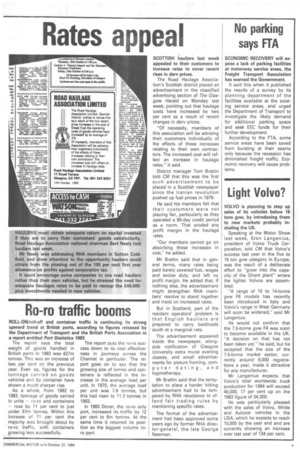Ro-ro traffic booms
Page 9

If you've noticed an error in this article please click here to report it so we can fix it.
ROLL-ON/roll-off and container traffic is continuing its strong upward trend at British ports, according to figures released by the Department of Transport and the British Ports Association in a report entitled Port Statistics 1983.
The report says the total The report puts the ro-ro sucweight of goods handled in Gess down to its cost effective
British ports in 1983 was 427m tonnes. This was an increase of two per cent on the previous year. Even so, figures for the tonnage carried on goods vehicles and by container have shown a much sharper rise.
As a whole, from 1982 to 1983, tonnage of goods carried in units — ro-ro and containers — rose by 11 per cent to just under 51m tonnes. Within this increase of 11 per cent the majority was brought about by ro-ro traffic, with containers growing less successfully. ness in journeys across the Channel in particular. The report goes on to say that the growing size of lorries and containers is reflected in the increase in the average load per unit. In 1970, the average load per unit was 7.8 tonnes, but this had risen to 11.3 tonnes in 1983.
In 1983 Dover, the ro-ro only port, increased its traffic by 12 per cent to 8m tonnes. At the same time it retained its position as the biggest volume roro port.


















































































































